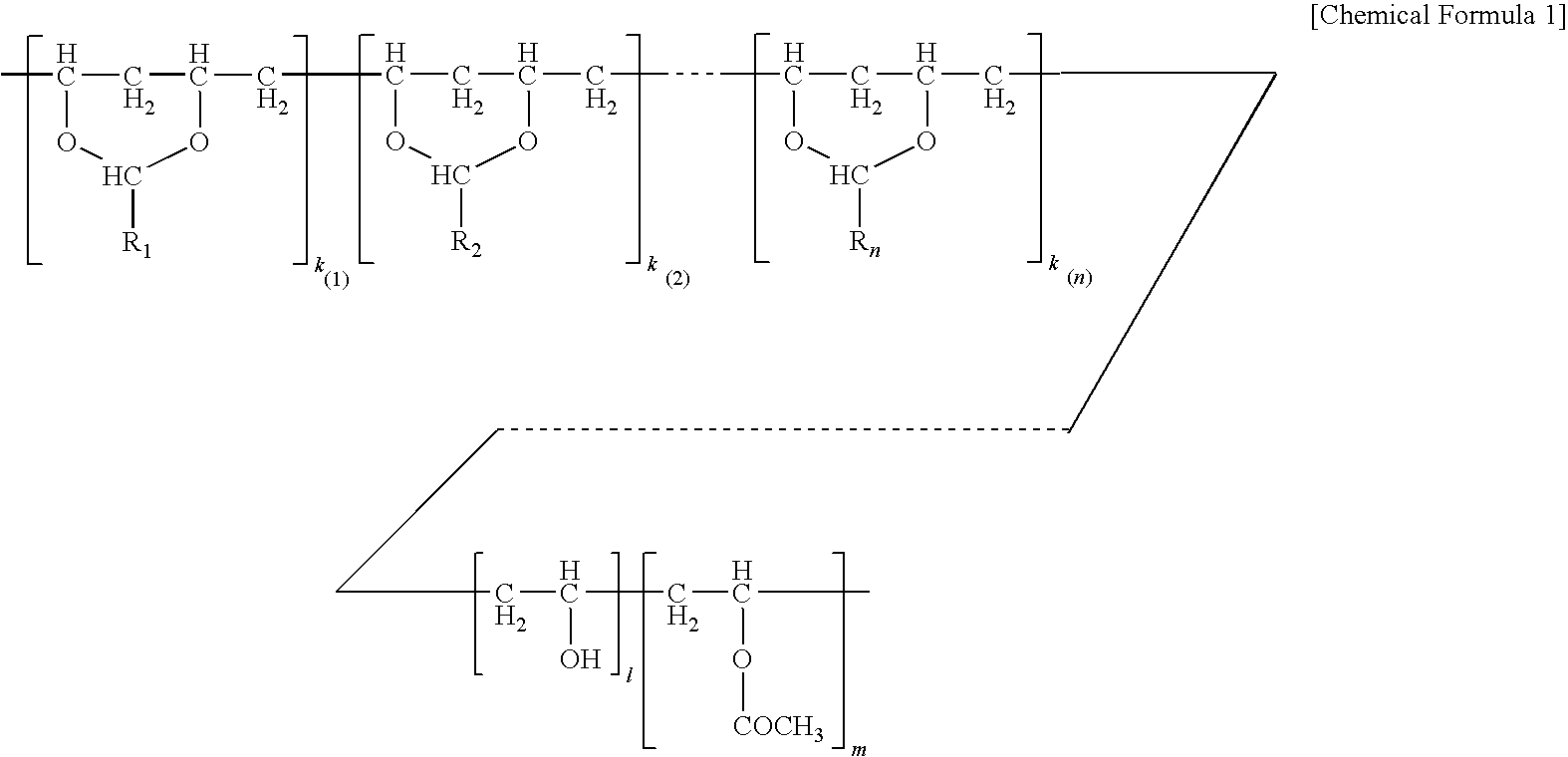Acrylic thermoplastic resin composition, acrylic resin film and acrylic resin composite
a thermoplastic resin and acrylic resin technology, applied in the direction of synthetic resin layered products, chemistry apparatus and processes, transportation and packaging, etc., can solve the problems of poor handling, difficult film formation, and lack of mechanical properties of methacrylic resins, and achieve excellent toughness, high surface hardness, and maintain transparency
- Summary
- Abstract
- Description
- Claims
- Application Information
AI Technical Summary
Benefits of technology
Problems solved by technology
Method used
Image
Examples
example 1
[0260]By a twin-screw kneading extruder (TEX-44α (L / D=40); manufactured by The Japan Steel Works, Ltd.) at a cylinder temperature of 220° C. and a screw rotation speed of 200 rpm, 90 parts of the methacrylic resin (A-1) and 10 parts of polyvinyl acetal resin (B-1) were kneaded to obtain pellets of thermoplastic resin composition. The resin temperature measured in front of the die of the extruder was 232° C. The maximum shear rate in the extruder was 300 sec−1, and the shear rate in the part where the clearance between barrel and screw element was large was 45 sec 1. A screw configured to be able to alternately apply shear at 300 sec 1 and shear at 45 sec−1 twice at a rotation speed in the above range was used.
[0261]The obtained thermoplastic resin composition pellets were injection-molded using J50E2 (manufactured by The Japan Steel Works, Ltd.) at a cylinder temperature of 240° C. Thus, a plastic JIS 1A-type dumbbell specimen, a rectangular specimen 80 mm long×10 mm wide×4 mm thick...
examples 2 to 7
[0265]Thermoplastic resin composition pellets were obtained in the same manner as in EXAMPLE 1 except that the type and / or amount of the methacrylic resin (A) and the polyvinyl acetal resin (B) were changed as shown in Table 2. A specimen was produced using these pellets. Table 3 shows the results.
TABLE 3Comp.Ex.Ex.12345671Methacrylicresin [parts]A-190756075757575100Polyvinylacetal resin[parts]B-1102540—————B-2———25————B-3————25———B-5—————25——B-6——————25—Bending testFlexural30002900280028002700230022003000modulus [MPa]Yield point8.37.16.76.96.67.07.6Noelongation [%]yieldpointFractureNotNotNotNotNotNotNot6elongation [%]fracturedfracturedfracturedfracturedfracturedfracturedfracturedToughness [J]>2>2>2>2>2>2>21.2Whitened state⊚⊚⊚⊚◯⊚◯⊚Tension testElongation28002800270026002600220021002900modulus [MPa]Fracture2540664231463812elongation [%]Toughness [J]50821328964766530Whitened state⊚⊚⊚⊚◯⊚◯⊚GlasstransitiontemperatureTgA [° C.]121121121121121121121121TgAP [° C.]119118116118118118118121TgB ...
example 8
[0272]Thermoplastic resin composition pellets were obtained in the same manner as in EXAMPLE 1 except that the prescription was changed to 75 parts of methacrylic resin (A-2) and 25 parts of polyvinyl acetal resin (B-1).
[0273]A specimen was produced using these pellets. Table 4 shows the results. The resin temperature of the thermoplastic resin composition measured in the front of the die of the extruder was 225° C.
PUM
| Property | Measurement | Unit |
|---|---|---|
| strain rate | aaaaa | aaaaa |
| temperature | aaaaa | aaaaa |
| roughness | aaaaa | aaaaa |
Abstract
Description
Claims
Application Information
 Login to View More
Login to View More - R&D
- Intellectual Property
- Life Sciences
- Materials
- Tech Scout
- Unparalleled Data Quality
- Higher Quality Content
- 60% Fewer Hallucinations
Browse by: Latest US Patents, China's latest patents, Technical Efficacy Thesaurus, Application Domain, Technology Topic, Popular Technical Reports.
© 2025 PatSnap. All rights reserved.Legal|Privacy policy|Modern Slavery Act Transparency Statement|Sitemap|About US| Contact US: help@patsnap.com



